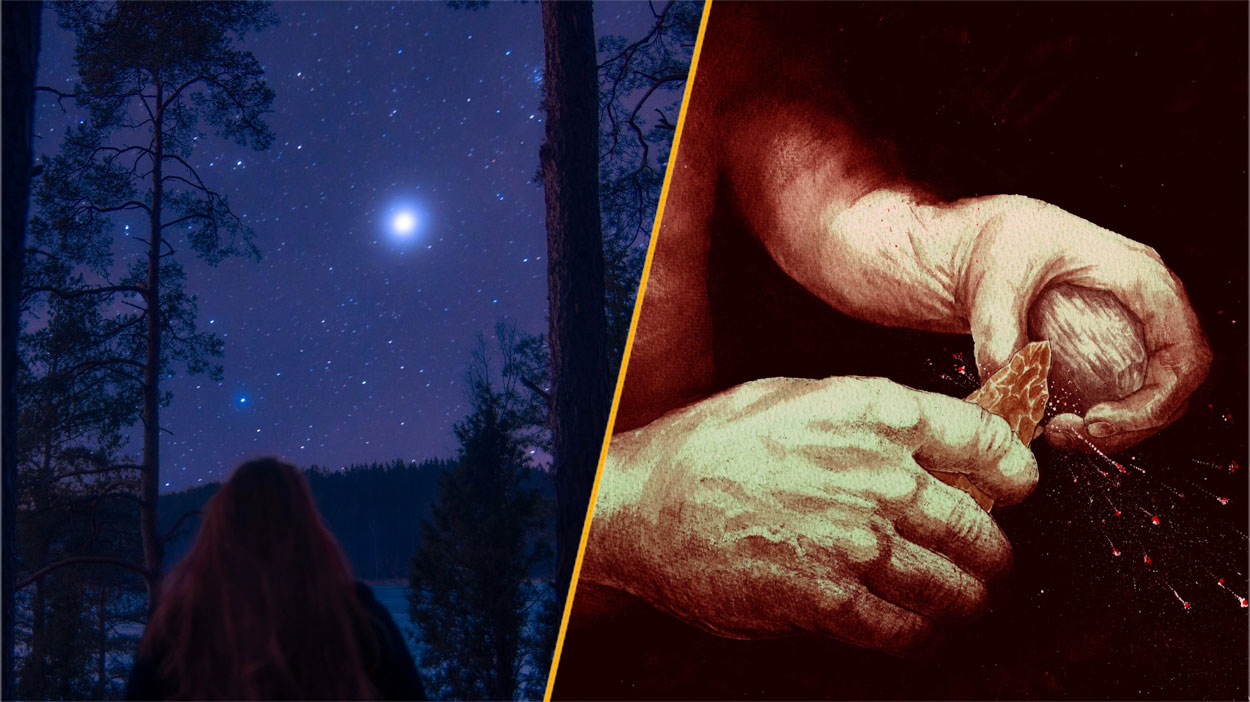25,000 Years Later, Javelin Is Still Embedded in Mammoth's Rib
About 25,000 years ago, ice age hunters in what is now Poland threw a light spear known as a javelin at a mammoth. Now, the discovery of that javelin has revealed a major surprise.
Previously, researchers wondered whether our ancestors had killed mammoths by trickery, for instance, by chasing them into pits or off cliffs. Or, perhaps ice age hunters targeted weak or sick mammoths that were easy to finish off.
But now, "we finally have a smoking gun, the first direct evidence of how these animals were hunted," Piotr Wojtal, an archaeozoologist at the Institute of Systematics and Evolution of Animals at the Poland Academy of Sciences in Kraków, told Science in Poland, a site run by the Ministry of Science and Higher Education. [Photos: A 40,000-Year-Old Mammoth Autopsy]
Deadly weapon
Researchers initially found the mammoth rib in 2002, at a mammoth hotspot in Kraków, where scientists, over the years, have discovered the remains of at least 110 mammoths that lived between 30,000 and 25,000 years ago, the researchers said.
"Among tens of thousands of bones, during a detailed analysis of the remains, I came across a damaged mammoth rib," Wojtal told Science in Poland. "It turned out that a fragment of a flint arrowhead was stuck in it."
It wasn't until February 2018 that they took a detailed look at the specimen.
During this examination, scientists found the 0.3-inch-long (7 millimeters) fragment of the flint tip, which likely broke when a hunter drove the spear into the mammoth's body.
Get the world’s most fascinating discoveries delivered straight to your inbox.
"The spear was certainly thrown at the mammoth from a distance, as evidenced by the force with which it stuck into an animal," Wojtal told Science in Poland. "The blade had to pierce 2-centimeters-thick [0.7 inches] skin and an 8-centimeter [0.04 inches] layer of fat to finally reach the bone."
This blow probably didn't kill the mammoth, but if the hunt involved several armed hunters, it's likely that strikes from other weapons, "probably directly into soft tissues and one of the organs," killed the giant, Wojtal said.
Ice age hunters?
Over the past 20 years, researchers have found mammoth remains containing human-made weapons at two sites in Siberia, but "I believe this is the first find of a weapon embedded in a mammoth bone in Europe," said Adrian Lister, a professor of vertebrates and anthropology at the Natural History Museum in London, who wasn't involved with the finding.
"It is important because it proves beyond reasonable doubt that mammoths were hunted," Lister told Live Science. Until now, there was only circumstantial evidence that ice age people in Europe hunted mammoths. For instance, the Polish site of Kraków Spadzista Street contains burnt bones involved in supporting the tongue, indicating that ancient people feasted on roasted mammoth tongue, Lister said.
"But you can never be absolutely sure that such animals were actually hunted rather than scavenged," Lister said. Or, if the mammoths did appear to be hunted, it remained a mystery what weapons were used against them, such as spears or traps.
The new find shows, without a doubt, that a spear was used against the beast, Lister said.
What killed off the mammoths?
Mammoths lived in Europe starting about 500,000 years ago and started dying out about 15,000 years ago. However, they survived longer in Alaska and lived on Wrangel Island, off northeast Russia, until about 4,000 years ago. [In Photos: Mummified Woolly Mammoth Discovered]
A mix of changing climatic conditions (the ice age was ending) and hunting likely caused the mammoth's extinction, but researchers still debate which played a larger role. In this case, however, this specific example is not necessarily evidence that humans played a big role in their extinction, Lister said.
"That doesn't prove people killed them in [large enough] quantities to drive them to extinction," Lister said. Moreover, this particular mammoth died about 25,000 years ago, at least 10,000 years before mammoths died out in Europe, "so 'sustainable' hunting is implied, at least at that time," Lister said.
- Photos: Mammoth Bones Unearthed from Michigan Farm
- Photos: Ice Age Mammoth Unearthed in Idaho
- Photos: Is Ice Age Cat Mummy a Lion or a Lynx?
Originally published on Live Science.

Laura is the managing editor at Live Science. She also runs the archaeology section and the Life's Little Mysteries series. Her work has appeared in The New York Times, Scholastic, Popular Science and Spectrum, a site on autism research. She has won multiple awards from the Society of Professional Journalists and the Washington Newspaper Publishers Association for her reporting at a weekly newspaper near Seattle. Laura holds a bachelor's degree in English literature and psychology from Washington University in St. Louis and a master's degree in science writing from NYU.



